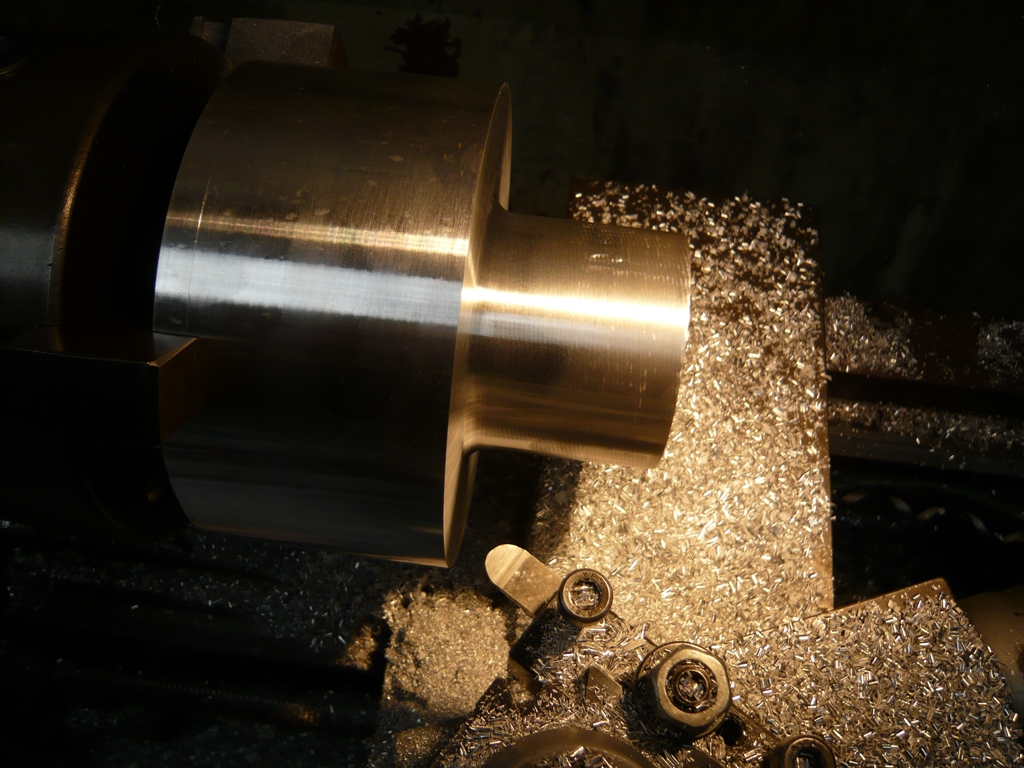Here's the snout of the hub turned down. This is an important part of the hub as the snout or spiggot takes the load from the wheel. The OD of this is the same as the ID of the pin drive adaptor. It's a snug fit so there's no movement.
The other good thing about using a live center is that you can take a fairly big cut on each pass without fear of the workpiece grabbing the tool and getting pulled out of the chuck. You can quicly remove a lot of material.

The initial machining was done with an indexable tungsten carbide tipped tool. These things are great, each tip has 3 faces and they are pre ground to the righ profiles. They are also very hard so last a long while.
Some jobs requre a piece of tool steel ground to the right shape. I've ground this piece with a rounded end that lets me make a nice radius corner. The radius corner is a lot stronger than a square cut corner as it eliminates the stress riser in the root of the corner. Carroll Smith wrote a very interesting book called Engineer to Win. It has a lot of inforation about why parts fail and how to make them stronger.

Next step is to machine the receses for the bearings. I run a big drill bit in to remove a heap of material quickly.

At this stage a lot of careful measuring and machining is required. My old lathe isn't that accurate any more so I have to sneak up on the right size a little at a time. The bearing recesses are machined to a tight tollerance because the bearing shells are pressed in. This means there is an interference fit and the hole is actually a couple of thousands of an inch smaller than the bearing shell.
The Tungsten carbide tips give a beautiful finish on the part.
